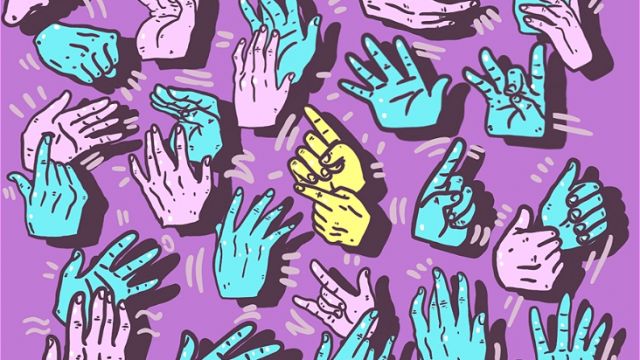Pah! Deaf Storytelling Night
We all seem to be fascinated by the marvellous expressive embodied language of Auslan. It can be transfixing to watch the Auslan interpreters at live presentations whenever and wherever they occur. I have a feeling that the incorporation of an interpreter ups the attention span for most of us.
Pah! Deaf Storytelling Night comprises four individuals telling us some of their experience of life pertaining to identifying as being Deaf or hard of hearing. All segments are wonderfully rich expressions of self and identity. The show is comprehensively and supportively introduced show by Sam Martin and Danni Wright and produced by the Wheeler Centre.
Firstly, with lashings of humour Nathan Borg welcomes us into his quirky youthful reality. He greets us in his pyjamas from the bathtub with a toy dinosaur and bottle of wine. In this segment there are many changes of costume and placing - in his house. It is lockdown after all. Borg’s interpreter is delightfully in tune with his humorous content and laissez-faire attitude.
Not wanting to have his identify defined by someone else, Karthik Vijayanandam talks of his self-perceptions and the importance of defining one’s own identity. His story opens on the suggestion that a potential date is interested in him because he is black like his coffee. This prompts him to explain who he actually perceives himself to be – how he identifies.
The female translator in this segment laughs so nicely in time with his laughter. As his story draws to a close, and he catches a tram home from Flinders St Station, Vijayanandam displays a real love of his home town. Melbourne affords him considerable affirmation through his happy experiences of living there. This intriguingly encourages the viewer to think about how place plays a big role in shaping identity.
Jasmine Shirref works without Interpretation - she uses image and the written word to elucidate her Auslan presentation. This is gusty and demanding, by contrast, and reminds the viewer of how much effort Deaf people have to make to communicate in English. It makes sense - as there is no sound if one is Deaf. There is heaps of written information and photos to augment our understanding. But most significantly this segment gets us to slow down and really try to understand the Auslan Shirref signs. There is much poignance in Shirref expressing her delight when she finally got to really express herself in Auslan.
The last telling is by Catherine Dunn. She presents the best argument for Auslan not only as a language but as the backbone of a lively vibrant culture that should be available to all Australian children who are born Deaf. Highlighted are the issues of Rural access to services. Dunn presents a beautifully well rounded and delightfully presented story of her education. Her interpreter’s voice, approach and timing is also great.
These last two stories reminded me of the challenges, engagement and fun I experienced studying Auslan at La Trobe Uni in the late 90s that imbued me with a very strong sense that Auslan is integral to the Deaf Community.
Really worth catching.
Suzanne Sandow
Subscribe to our E-Newsletter, buy our latest print edition or find a Performing Arts book at Book Nook.

